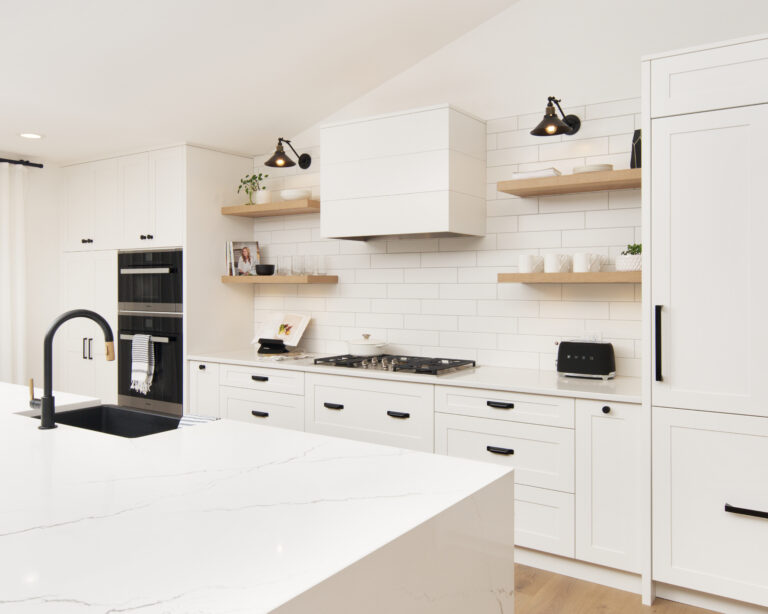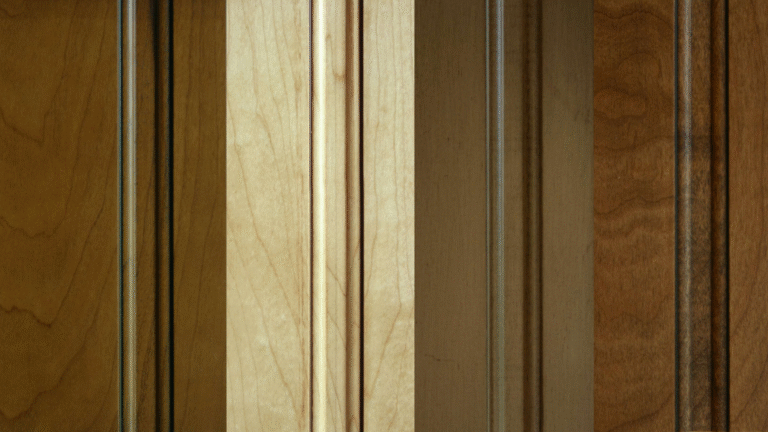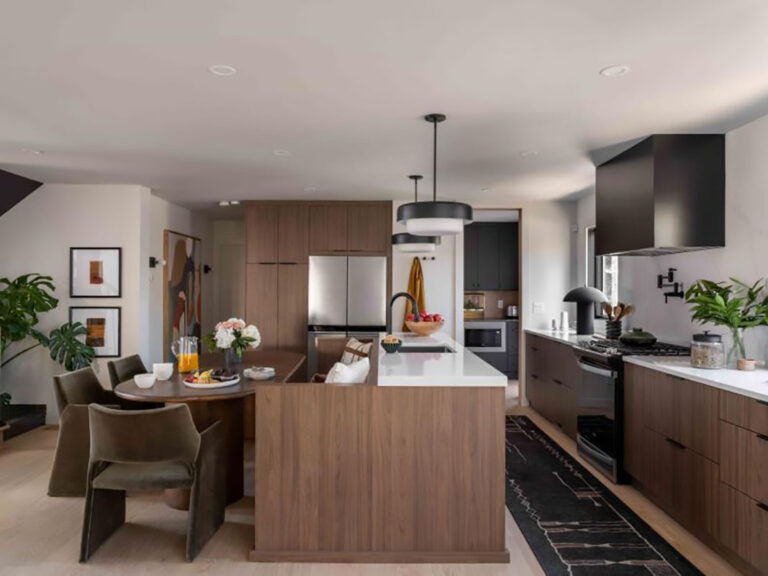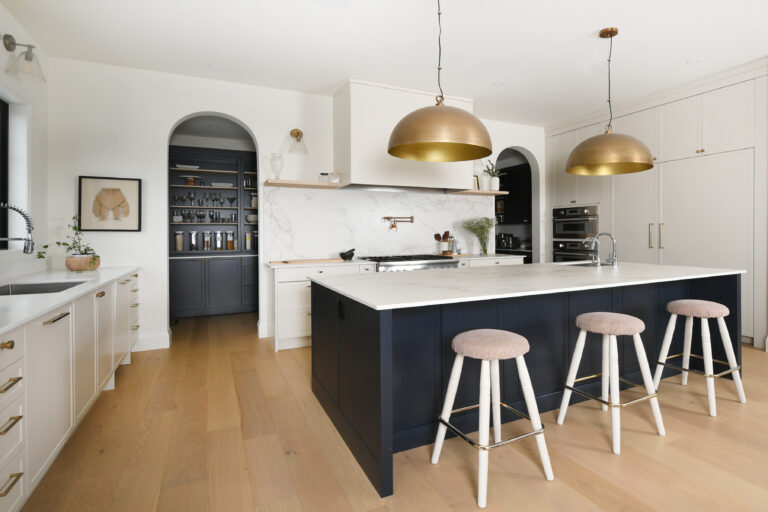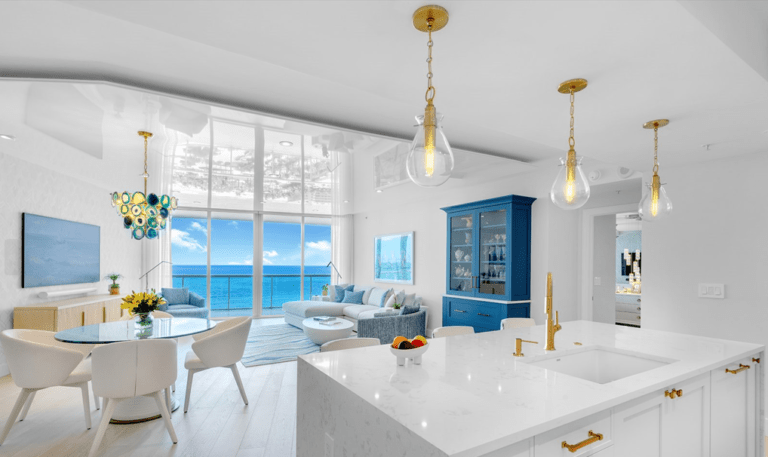AI is everywhere right now. It’s writing emails, generating images, answering questions—and in some cases, even helping design kitchens. So we thought, why not give AI kitchen design a try?
It sounded fun, fast, and maybe even a little bit useful. Could AI give us layout ideas? Inspiration? Maybe even something we could actually use? We tested it out to find out.
Let’s just say—it got interesting.
How We Put AI kitchen design to the Test
For this experiment, we tried two things:
- Using ChatGPT’s image generation tool to create a full kitchen design based on a prompt.
- Using Photoshop’s AI image generation and generative fill tools to refine or transform existing images.
Some images looked incredible at first glance. Others had some strange surprises. But through all of it, we found a few ways that AI kitchen design can help visualize big changes, but ultimately you’ll see why it’s still not ready to take over.
If you’re curious, the tools are easy to try—and kind of addicting. Whether you’re dreaming up ideas or just want to play around with layouts, AI kitchen design can give you a visual jumping-off point.
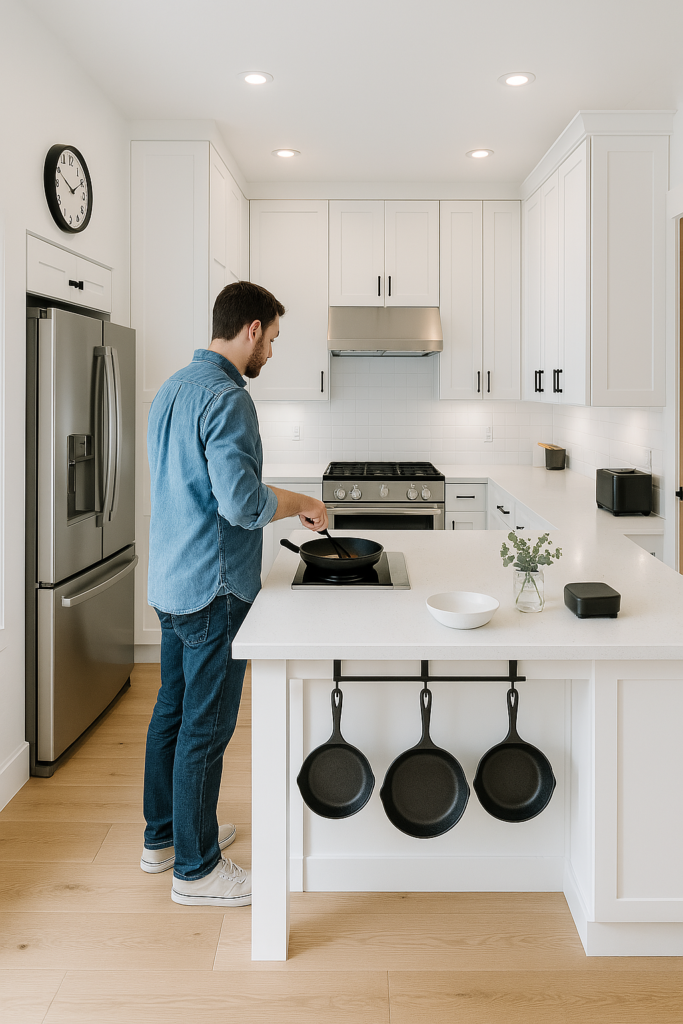
AI Kitchen Design with ChatGPT
Start by typing in what you want to see. The more specific you are, the better. Think finishes, layout, even cabinet styles. It’s a fun way to explore different directions, especially if you’re not sure what you like yet.
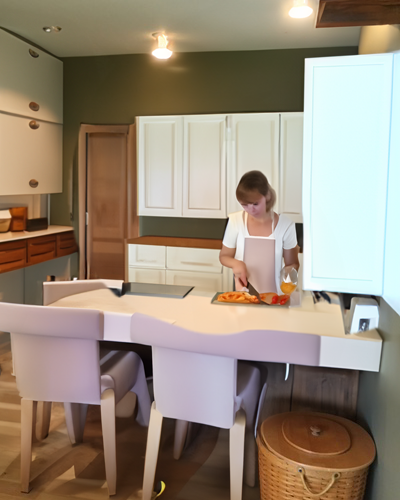
Use Photoshop AI Kitchen Design
This tool lets you expand or alter parts of an image using prompts. You can add a window, swap the backsplash, or generate a new island style—right in the image. It’s great for imagining small changes without redrawing everything from scratch.
Let's Start the Experiment of AI Kitchen Design
First, I am going to start from scratch with ChatGPT, let’s see what it can do with this prompt:

Honestly, I am impressed with this as a first try. While simple, it looks pretty functional.
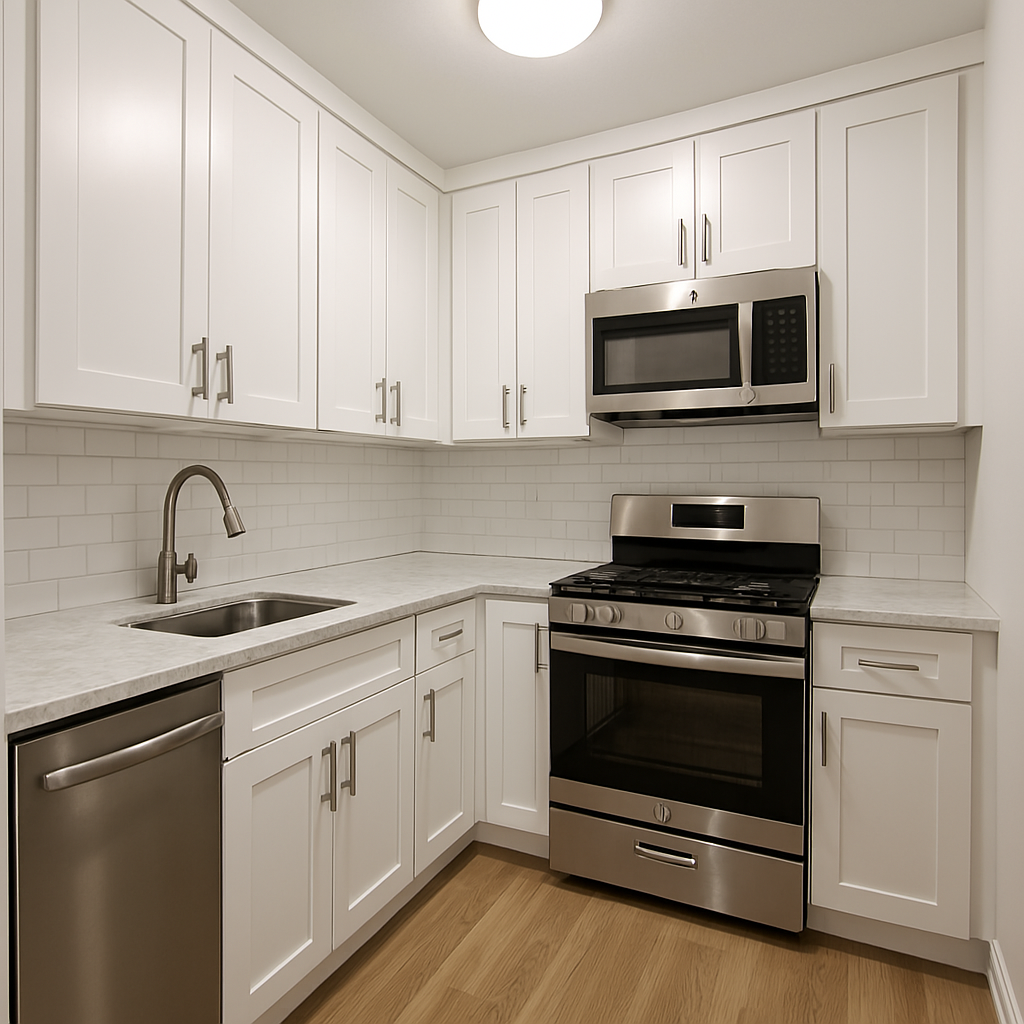
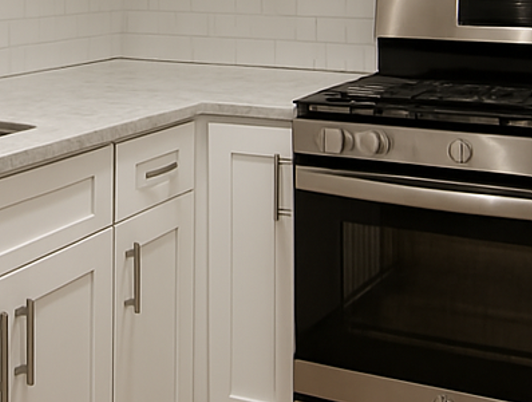
Just don’t look too closely at the cabinet handle attached to the oven and one may think this is a real kitchen.
But how does AI kitchen design fair once you start adding in more elements to the project brief? Can it include all the details a customer may ask? Let’s give the image generator a bit more to work off of.

I was a bit scared this time around, but the final image looks alright – except it missed one point already.

I had asked the AI kitchen design to add a mix of cup pulls, knobs, and handles. This design includes two of the three hardware types.
For fun, let’s try to add some personality to this design.

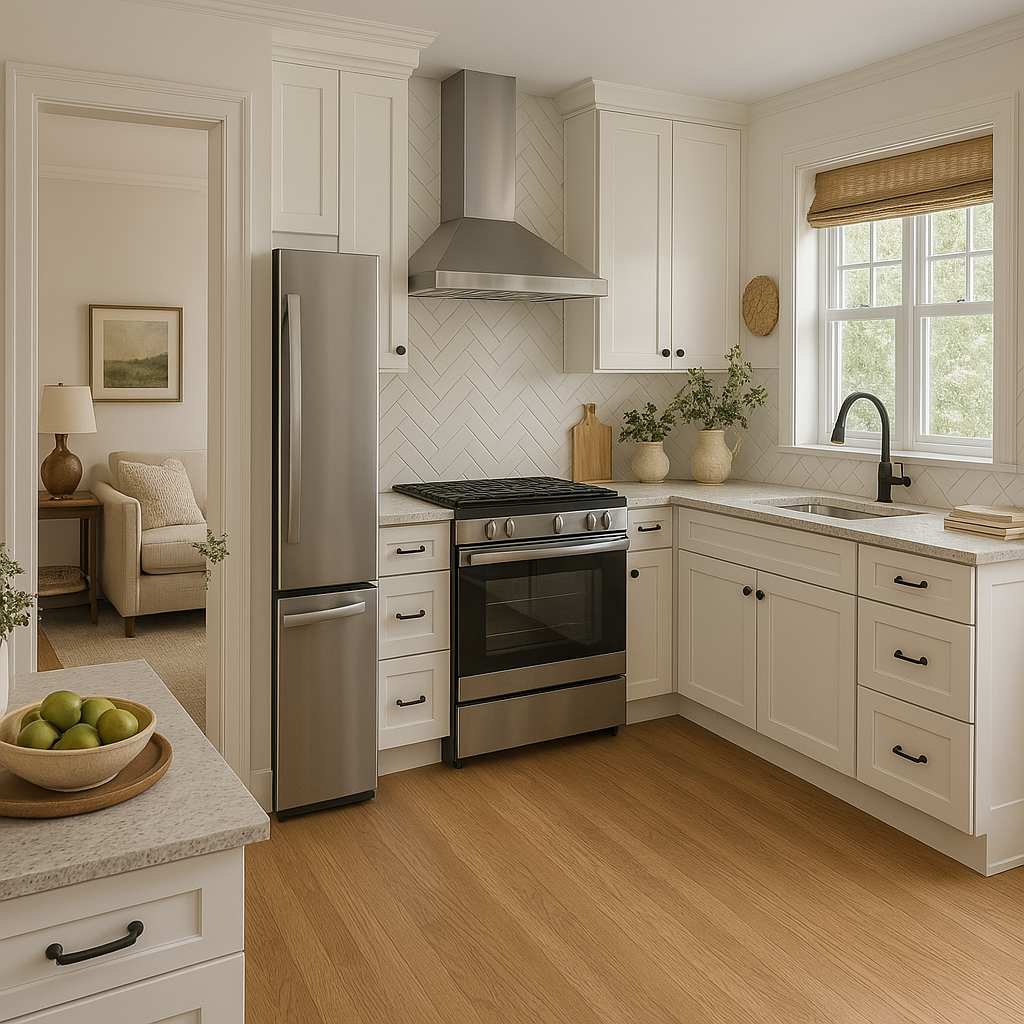
What is that fridge? How does the cabinet above the fridge work in real life? Also, it removed all the cup pulls this time around. Too many issues to count.
This is where AI kitchen design falters a bit. It looks pretty, but if you paid money for this rendering, you would be asking for a refund.
But to be fair, most homeowners don’t start with nothing. They have their own home to go off of, so let’s test an AI kitchen design where we ask AI to generate a kitchen based on a real home.
AI Kitchen Design VS. Our Designer Kitchen
Luckily, we have some before pictures from a design by Keslie Muhlenbruch from Minnesota Cabinets.
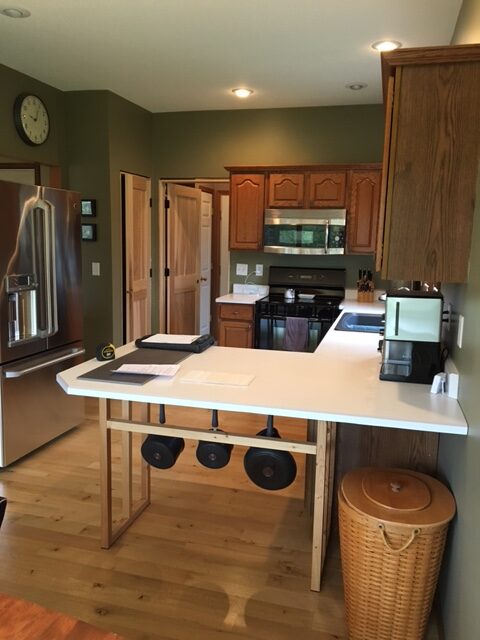
Let’s put this before photo into the Image Generator and see what happens! This should be fun.
Can we create an AI kitchen design for this homeowner?
I uploaded the photo for reference and tried a few different prompts with more and less detail and also tried a separate ChatGPT window to get these new AI kitchen designs.

The fridge area looks a bit more proportional and it kept the little pan holder, so I think this AI kitchen design would be an okay inspiration photo. However there is no way to see if all this would fit into the space without taking measurements.

This one completely removed the door area, but again kept the pan holders. I think with both of these the pans are not on the right side for cooking so function is not considered. It’s a pretty picture, not an AI kitchen design.
I think it is safe to say this is not going to compare to a professional design (and trust us, we will show you the real after photos from the designer) but let’s try one more time with photoshop AI and see what it can do.
First I stared with using the before picture as a reference photo and creating a new kitchen design from that. I am not sure it understood the assignment.
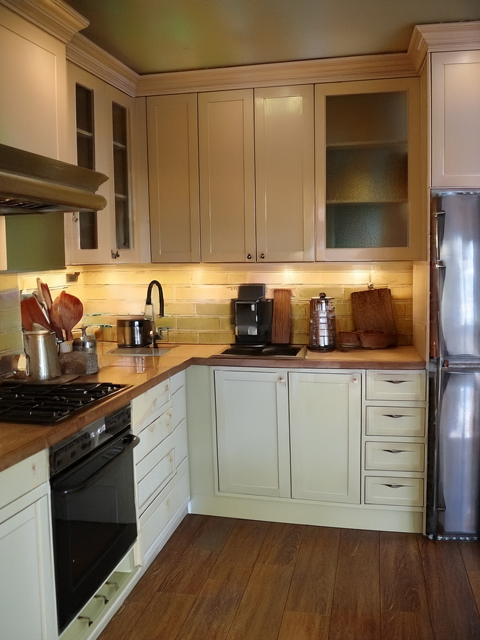
Apart from this not even being the same house, this design has so much wrong with it that I don’t need to explain why this would never work. Unlike the ChatGPT images that were pretty, this one looks like another “before”.
Since that was a flop, I moved onto playing around with Photoshop’s “generative fill” feature, which allows you to select and use AI to edit portions of a photo.
For example, I change the cabinet’s to a white shaker style and created seating.
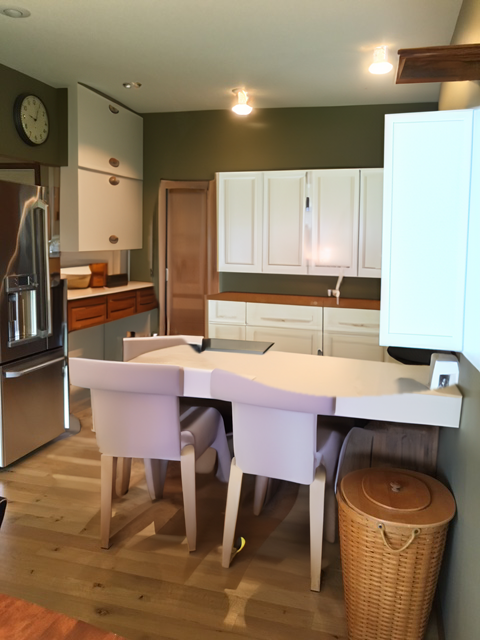
I think it is pretty clear this is not a functioning kitchen, but it does help visualize color and some basic function.
Comparing the before with all these “after” options. It gives you an idea of style, but nowhere near a complete kitchen design.






What did a professional designer create for this homeowner?
Minnesota Cabinets was able to create a beautiful new space for the client. Here are the after photos of this new kitchen!
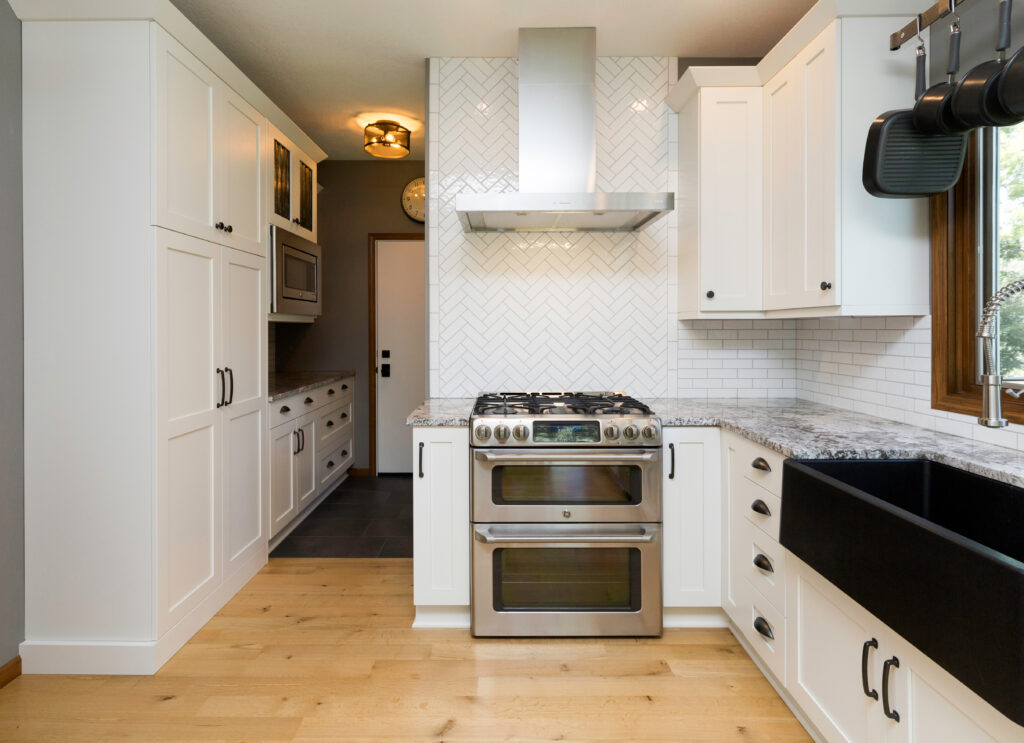
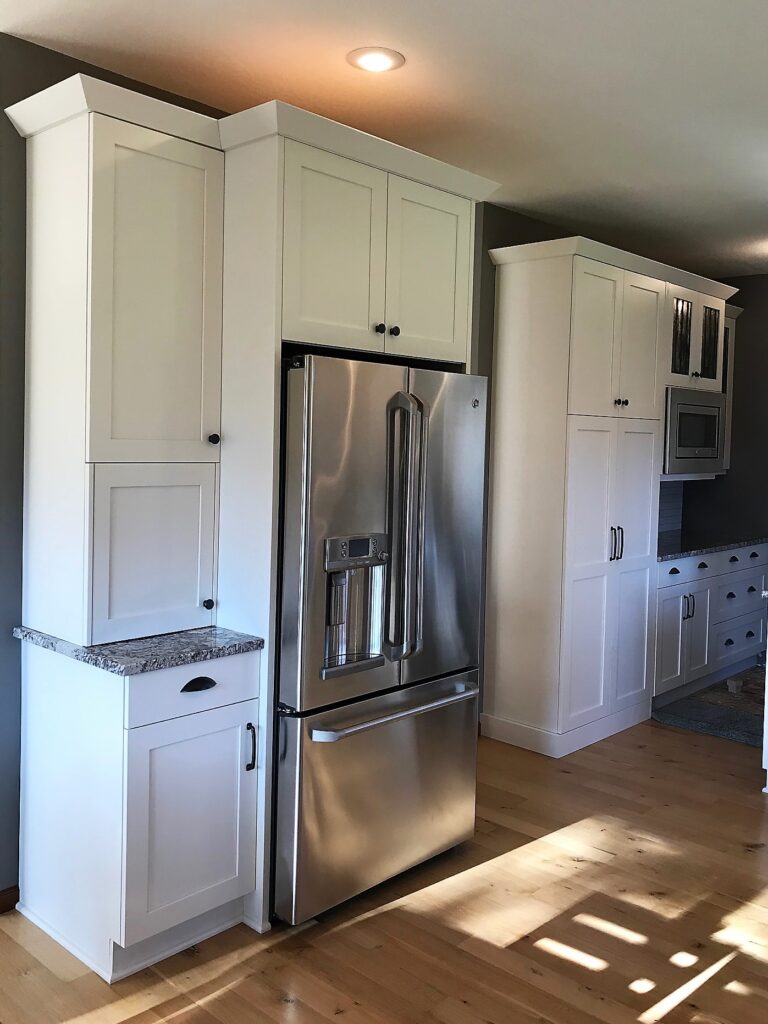

This is so much better than anything AI could dream up! The kitchen is proportional, beautiful, and some major changes were made to increase function.
Does AI Kitchen Design Replace a Professional?
Let’s clear this up right away: no.
While there are probably better AI tools on the market than ChatGPT, they are only as good as the designer wielding them.
Practically, AI Kitchen Design Doesn’t Work as a Replacement for a Designer
AI kitchen design can’t produce real floorplans, CAD files, or product lists. It doesn’t calculate clearances or building code. You can’t order cabinets from it, and it makes mistakes constantly. What looks good in a picture may fall apart in real life.
It doesn’t ask how many people live in your home, or whether you bake every weekend, or if you need drawers for big pots. All the details that make a kitchen work just aren’t part of the equation.
A homeowner cannot use AI to create a kitchen design, and expect it to replace a designer.
There's No Consultation or Creative Collaboration
AI needs very specific direction. It won’t surprise you with a better idea or connect your vision with a new layout you hadn’t thought of. That’s where working with a real kitchen designer matters. Years of experience help them see what works, solve problems, and design something truly unique to your space and your lifestyle.
AI can reflect back what you ask for. It can’t create something bigger than the prompt.
It’s Still Messed Up!
And honestly? AI kitchen design is still a bit wonky. Cabinets float, proportions are off, appliances vanish. Sometimes it forgets how a kitchen even works. You might get a stunning image—but it’s not one you can actually build from. At least, not yet.

Don’t try to add people to your AI kitchen design for a more realistic design, it will give you scary human like blobs.
AI Kitchen Design Is Fun—but It’s Not a Replacement for a Designer
If you’re starting a renovation, go ahead and try AI kitchen design. It’s a great way to get your ideas flowing. But when it comes to planning a real kitchen—one that functions, flows, and fits your life—there’s no substitute for working with someone who really gets it.
Use AI to inspire. Then bring in a designer to make it real.
Want to see how a real designer would improve on those AI results? We’d love to show you.




